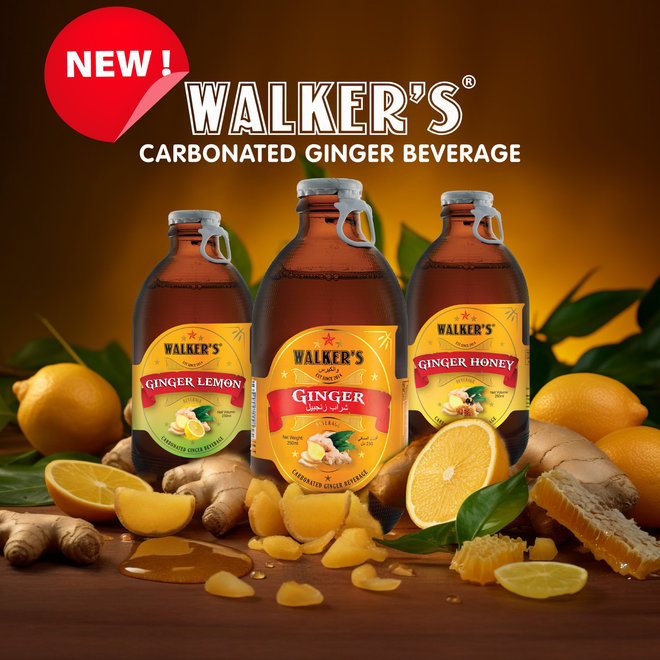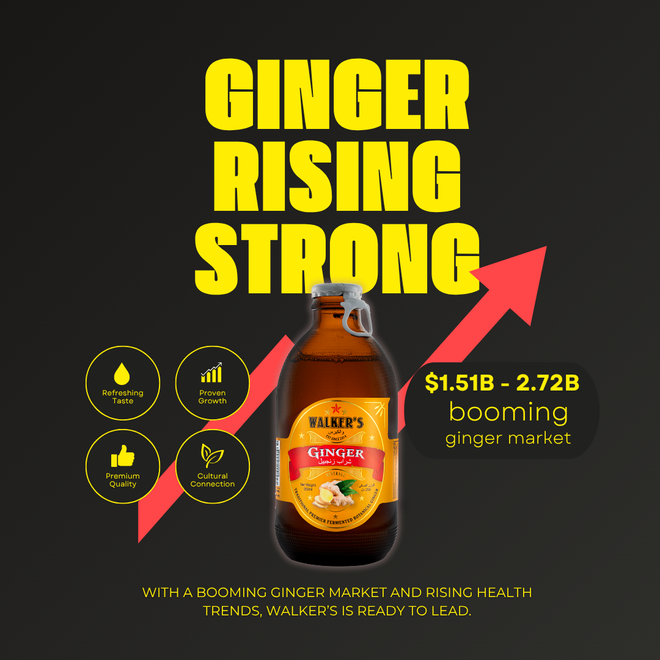Walker’s Ginger Beverages
Tapping Southeast Asia’s Expanding Ginger Beverage Market

Market Opportunity in Southeast Asia
The global ginger market is projected to grow from approximately USD 5.7 billion in 2025 to USD 7.4 billion by 2030, representing a compound annual growth rate (CAGR) of around 5.4% (Mordor Intelligence). The Asia-Pacific region is leading this growth, with its market estimated at USD 1.51 billion in 2024 and expected to reach USD 2.72 billion by 2033 (CAGR of 6.7%) (Source: Renub Research, Research and Markets).
This momentum is driven by increasing health awareness, wider adoption of functional beverages, and government initiatives supporting ginger cultivation and export (Source: figlobal.com, Mordor Intelligence).
Cultural Relevance and Consumer Trends
In countries like the Philippines, Indonesia, Malaysia, and Singapore, ginger-based drinks such as salabat, wedang jahe, and teh halia have deep cultural roots and are widely consumed. Today’s consumers especially health-conscious young adults are actively seeking natural, clean-label beverages. This trend aligns perfectly with Walker’s Ginger Beverage, which focuses on offering a premium, natural product with an authentic ginger taste (Sources: dzinsights.com, Renub)

Product Differentiation: Walker’s Ginger Beverage
Walker’s Ginger Beverage is made using a recipe from the UK, creating a sparkling, crisp drink that is both refreshing and warming. It’s not just a traditional health tonic, it’s also a lifestyle beverage. With its balanced ginger flavor and lively carbonation, it caters to both modern retail shelves and trendy cafés looking for something unique to serve.
This product bridges Eastern tradition and Western craft, offering a twist that appeals to today’s diverse and curious consumers.
Market Growth and Strategic Advantage
With Asia-Pacific as the fastest-growing region for ginger-based products, Southeast Asia offers significant growth potential with a CAGR of 6–7% (Source: dzinsights.com, foodandbeveragetimes.com, Mordor Intelligence). The demand for clean-label, health-driven beverages is propelling ginger-forward drinks into mainstream appeal, opening opportunities across both developed and emerging markets.
